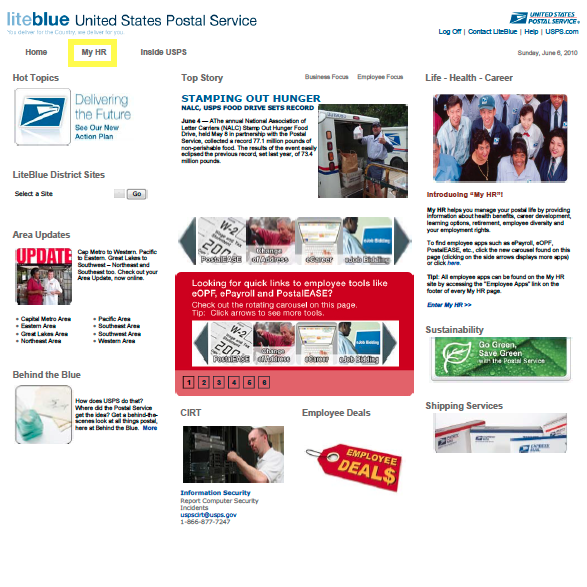Spousal Survivors Benefits for CSRS Employees
 When a federal employee or annuitant dies, his or her annuity benefits may be payable to a surviving spouse. This article discusses the annuity benefits payable to surviving spouses of employees covered by CSRS and CSRS-Offset, as well as spouses of former employees who meet the annuity requirements.
When a federal employee or annuitant dies, his or her annuity benefits may be payable to a surviving spouse. This article discusses the annuity benefits payable to surviving spouses of employees covered by CSRS and CSRS-Offset, as well as spouses of former employees who meet the annuity requirements.
Spousal Survivor Annuity at Death of an Employee
In general, in order for survivor annuity benefits to be payable, a deceased employee must have: (1) completed at least 18 months of creditable civilian service; and (2) died while subject to CSRS deductions. An individual’s death is considered as a “death in service” and survivor annuity benefits are payable if: (1) the individual was an applicant for disability retirement but died before final separation; or (2) the individual was an applicant for immediate retirement but died before the starting date of the annuity, even though separation had occurred.
Except for members of Congress, an individual is not considered to be either a retiree or an employee if he or she separates from service and dies either before applying for retirement or before the starting date of a deferred annuity. In that case, only a lump-sum payment of the deceased employee’s CSRS contributions is payable to the surviving spouse.
For a survivor annuity to be payable to a spouse, the spouse must meet one of the following requirements: (1) the surviving spouse and the employee must have been married for at least nine months. The aggregate time of all marriages between the spouse and the employee should be used to determine the total length of marriage; or (2) a child was born from this union. The child could have been born posthumously to the deceased employee and spouse; or (3) the death of the employee was accidental. There also can be no court order awarding the total survivor annuity to a former spouse.
If a former spouse were awarded only a portion of the total survivor annuity, the surviving spouse will receive the remainder. If a court order awards the total survivor annuity to a former spouse, then the surviving spouse will not receive anything.
A spousal survivor annuity is equal to 55% of a CSRS annuity, computed as if the employee had retired on a disability retirement as of the date of death.
Survivor benefits to the spouse of a deceased CSRS-Offset employee are the same as the benefits payable upon the death of an employee with full CSRS coverage until and unless the survivor becomes eligible for Social Security survivor benefits. In particular, a surviving spouse who is not entitled to Social Security survivor benefits continues to receive full CSRS survivor annuity benefits.
But if the surviving spouse is entitled to his or her own Social Security benefits, then the surviving spouse receives full CSRS survivor benefits until he or she becomes entitled to Social Security survivor benefits. This normally occurs at age 60, unless the spouse is disabled (then it would start at age 50), or has a minor child (then it would start at any age). Once the spouse becomes entitled to Social Security survivor benefits, the CSRS survivor annuity is reduced, or offset, by the amount of the surviving spouse’s Social Security benefit.
An annuity to the surviving spouse of an employee begins on the day after the employee’s death. The exception is the case of a surviving spouse whose entitlement to a survivor annuity depends on the birth of a posthumous child. In this case, the benefits begin on the day after the child is born.
A survivor annuity to a widow or a widower ends on the last day of the month in which he or she: (1) dies; or (2) remarries prior to age 55. For remarriages occurring after January 1, 1995, if the widow or widower remarried before age 55 and was married for at least 30 years to the individual on whose service the survivor annuity is based, the survivor annuity will not be terminated.
A survivor annuity that ended because of remarriage before age 55 may be restored if: (1) the remarriage ends by death, divorce or annulment; and (2) the widow or widower pays back any lump sum benefit paid when the annuity ended.
Spousal Survivor Annuity Benefit – Death of an Annuitant
An annuitant is an individual who meets all requirements for retirement and has applied for retirement (either a regular or a disability retirement) and has separated from his or her agency’s employment rolls. But if a former employee did not file an application for an annuity or was not entitled to an annuity, then the individual is a separated employee – not an annuitant – and the rules below do not apply.
A spousal survivor annuity is payable to the spouse of a deceased annuitant only if the annuitant elected a reduced annuity to provide the survivor benefit. To qualify as a surviving spouse of a deceased annuitant, the individual must be married to the annuitant at the time of the annuitant’s death and must meet one of the following requirements:
● The surviving spouse and the annuitant must have been married for at least nine months. The aggregate time of all marriages between the spouse and the annuitant is counted to determine the total length of the marriage; or
● A child was born of the marriage. For this purpose, a child includes: (1) a child born posthumously to the deceased annuitant and spouse; (2) a child born to the deceased annuitant and spouse before they were married; and (3) a child of a prior marriage between the deceased annuitant and spouse (an adopted child is not a child born of the marriage); or
● The death of the annuitant was accidental.
A surviving spouse may receive only one CSRS survivor annuity based on the service of one employee. But a surviving spouse may receive more than one survivor annuity benefit based on the service of more than one employee.
A court order awarding a former spouse a survivor annuity prevents OPM from paying the surviving spouse the portion of the annuity awarded by the court order. But the surviving spouse — if otherwise eligible — remains eligible for the complete survivor annuity if and when the former spouse loses eligibility.
Calculation of Survivor Annuity
The maximum possible survivor annuity is 55% of the annuitant’s annuity before it is reduced by the cost of the survivor benefit. The general formula for computing the cost of the survivor annuity under CSRS is:
2.5% of the first $3,600 of the annuity plus 10% of the remaining “base.”
The “base” is something an annuitant would choose. If the annuitant chooses the maximum survivor benefit, the “base” is equal to the annuitant’s annuity at the time of retirement. If an annuitant were to live and receive the first COLA (in January following the year of retirement), both the CSRS annuity and the survivor annuity are adjusted by the same COLA.
Every COLA the annuitant receives will increase the survivor annuity by the same percentage. Upon death of the annuitant, the initial annuity paid to the survivor will include all previous COLAs that had been granted to the annuitant. The survivor annuity will also be increased by all future COLAs.
Calculation of CSRS-Offset Survivor Annuity
A survivor annuity payable to the spouse of a deceased CSRS-Offset annuitant is computed in the same manner as a survivor annuity payable to the spouse of a deceased annuitant with full CSRS coverage. The amount of survivor annuity payable to the spouse of a deceased CSRS-Offset annuitant may be reduced if the spouse is eligible for Social Security survivor benefits. This is based on the deceased’s federal service covered by Social Security.
If Social Security survivor benefits (based on the deceased annuitant’s federal service under Social Security) are payable, the surviving spouse receives full CSRS survivor benefits until he or she becomes entitled to Social Security survivor benefits. This normally occurs at age 60. But survivor benefits may begin before age 60 if the surviving spouse is disabled or has a minor child in care;
When the spouse becomes entitled to Social Security survivor benefits, the CSRS survivor annuity is reduced (offset) by the amount of the survivor’s Social Security benefit attributable to the period the deceased annuitant was under CSRS Offset.
The offset of a CSRS survivor annuity stops on the date the survivor loses eligibility for Social Security benefits due to any of the following reasons:
1. The survivor becomes eligible for a Social Security benefit based on his or her earnings under Social Security and the benefit exceeds the survivor Social Security benefit:
2. The survivor remarries before age 60; or
3. The Social Security benefit stops because a minor child is reaches age 16 and the survivor is under age 60.
Termination of Survivor Annuity
A CSRS survivor annuity payable to a surviving spouse begins on the day after the death of the annuitant and ends on the last day of the month preceding the month in which the survivor annuitant dies or remarries before age 55. This will be the case if remarriage is after Jan. 1, 1995. If the widow or widower remarries before age 55 and was married at least 30 years to the individual on whose service the survivor annuity is based, then the survivor annuity will not be terminated.
A survivor annuity that is terminated because of remarriage before age 55 may be restored if: (1) the remarriage is later terminated by death, annulment or divorce; and (2) if the spouse pays back any lump-sum benefit that was paid upon the termination of the annuity.








